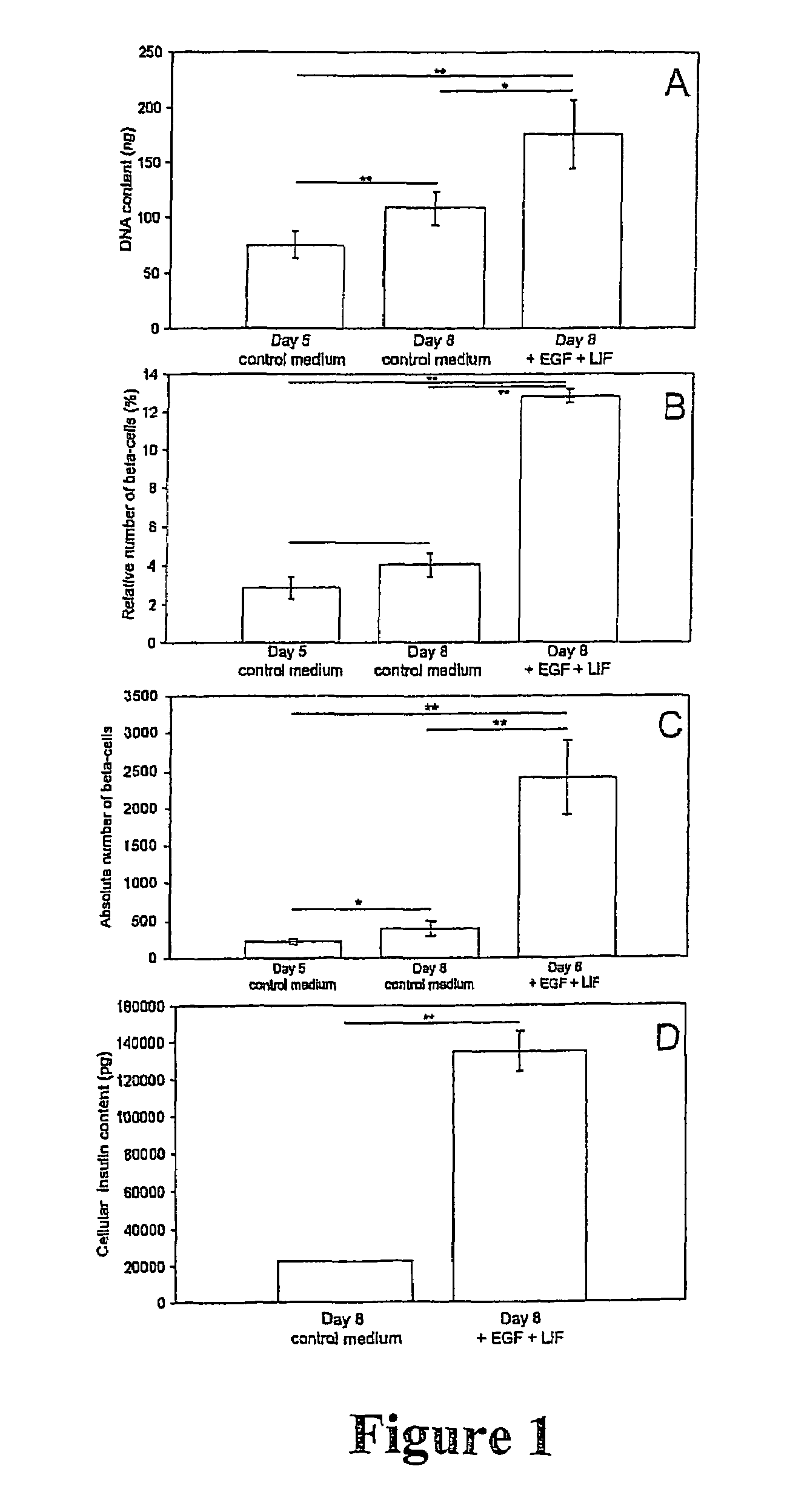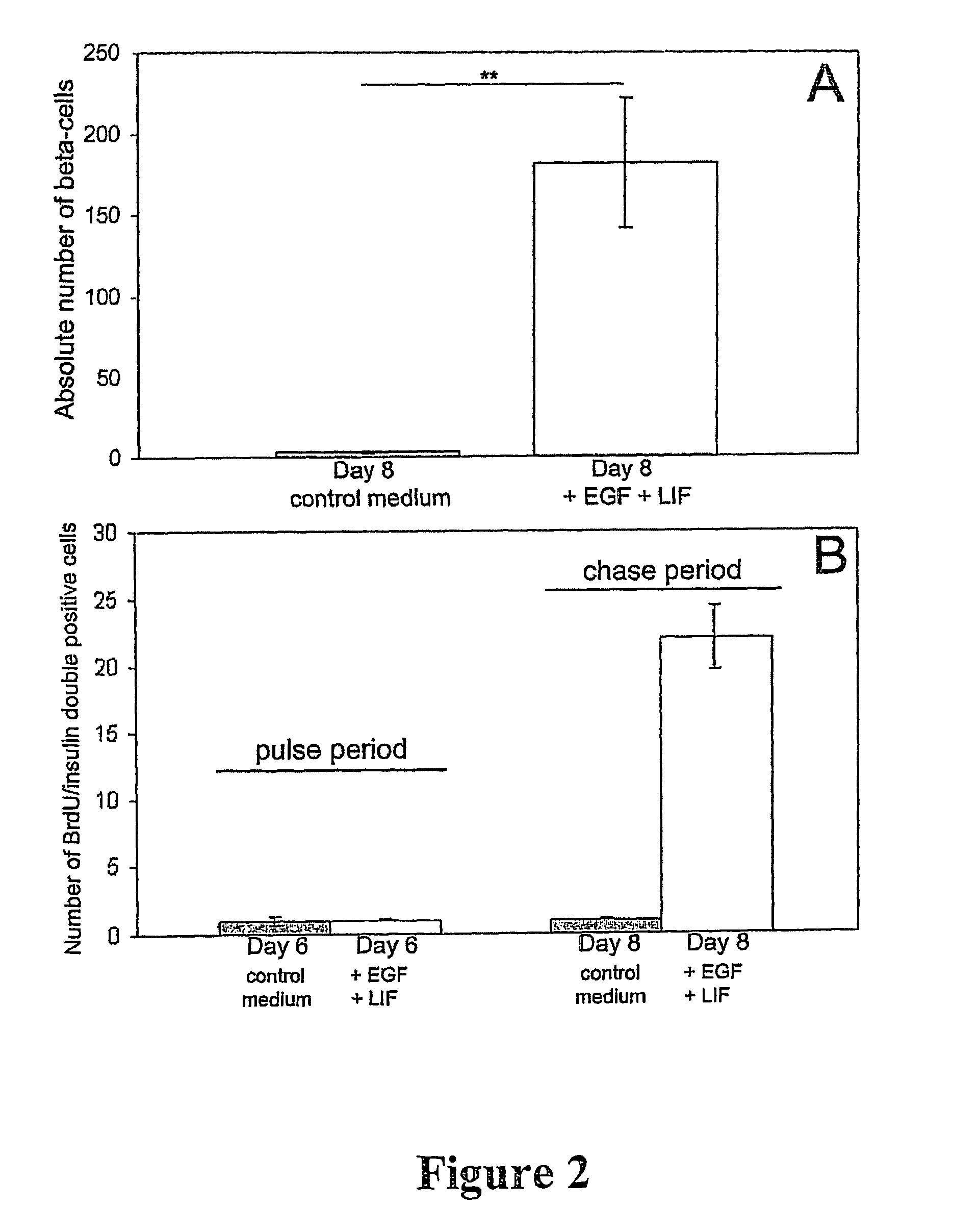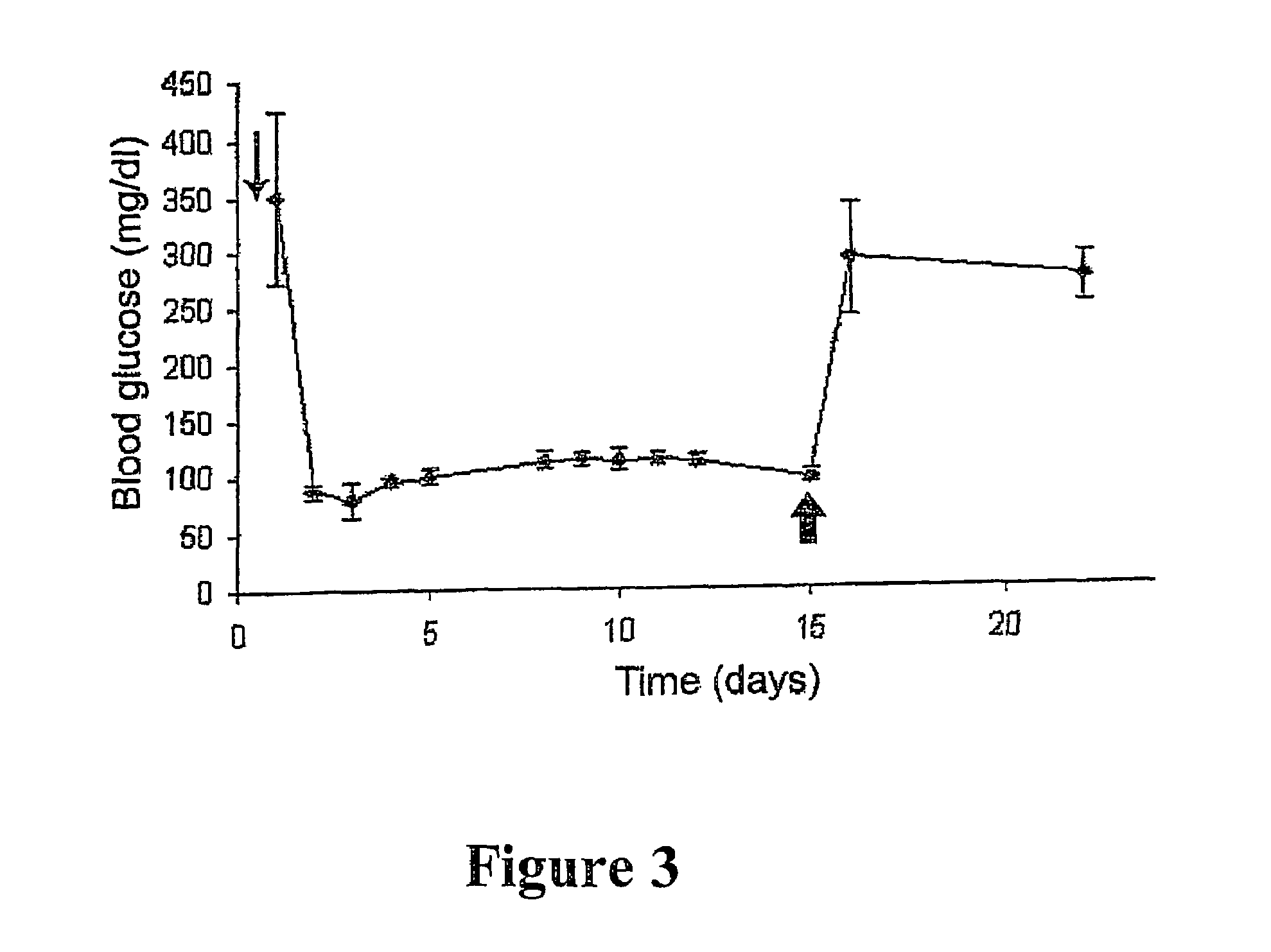Method of generating islet beta-cells from exocrine pancreatic cells
a pancreatic cell and exocrine technology, applied in the field of pancreatic cells, can solve the problems of difficult to draw firm conclusions from whole pancreas studies both in terms of cell derivation and specific regulatory factors
- Summary
- Abstract
- Description
- Claims
- Application Information
AI Technical Summary
Benefits of technology
Problems solved by technology
Method used
Image
Examples
example 1
Experimental Setup
[0048]Animals: Male 10-12 week old Wistar rats (Janvier, Le Genest-St-Isle, France) weighing 250-300 g were used for the isolation of cells from the pancreas. Eight-week old male BALB / cAnNCrl-nuBR nude mice (Charles River Laboratories, Inc. Wilmington, Mass.) weighing 22-24 g were used as recipients for transplantation. All animal experimentation was approved by the Ethical Committee of the Free University of Brussels.[0049]Isolation of exocrine tissue: Pancreata were partially dissociated with collagenase and exocrine acini were purified by centrifugal elutriation as published before (Rooman et al. (2000) & (2001) cited supra).[0050]Culture procedure: Exocrine cells were pre-cultured for 4 days in bacteriological petri dishes (Nunc, Naperville, Ill., USA) in suspension culture in RPMI-1640 Glutamax-I medium supplemented with 10% fetal bovine serum (FBS, Gibco BRL, Paisley, Scotland), penicillin (75 mg / l) (Continental Pharma, Brussels, Belgium) and streptomycin (10...
example 2
Generation and Composition of Exocrine Cell Monolayers
[0057]Isolated and pre-cultured exocrine acinar cell aggregates were obtained as described earlier (Rooman et al. (2000) & (2001) cited supra) and subsequently allowed these cells to form monolayers on plastic. More than 90% of the cells were immunoreactive for the ductal marker CK20 and had lost the amylase marker of acinar cells. (Of these cells, 79.0±0.4% (n=7) were binucleated, a characteristic of part of the acinar cells. These cultures were initially contaminated with 3.7±0.46% (n=7) insulin-positive cells. When the cell preparations had been pre-treated with alloxan prior to monolayer formation, the monolayers contained less than 0.5% insulin-positive cells. When geniticine was used during the cultivation, the outgrowth of fibriblastic cells was inhibited.
[0058]Published data showed that exocrine acinar cells lose their differentiated characteristics like amylase and other zymogens within 4 days of suspension culture and s...
example 3
Effect of Growth Factors on Cell Number and Beta-Cell Frequency
[0059]When monolayer cultures were treated with LIF and EGF for 3 days, a significant increase in DNA content was noted compared to the start of the culture and compared to cultures devoid of both growth factors (FIG. 1A). The total surface covered with cells which was measured by morphometry showed a comparable increase.
[0060]Treatment with LIF and EGF also induced a significant increase in the frequency of insulin-positive cells, expressed as the percentage of all cells (FIG. 1B). When multiplying the frequency of insulin-positive cells with total DNA-content to have a measure of the absolute beta-cell number, an 11-fold increase in beta-cell number was observed in the presence of LIF and EGF over the 3-day culture period (FIG. 1C). Analysis of total cellular insulin content by radio-immunoassay showed a 6-fold increase in LIF and EGF treated cultures compared to control cultures (FIG. 1D).
[0061]In the presence of eith...
PUM
| Property | Measurement | Unit |
|---|---|---|
| concentration | aaaaa | aaaaa |
| concentration | aaaaa | aaaaa |
| concentration | aaaaa | aaaaa |
Abstract
Description
Claims
Application Information
 Login to View More
Login to View More - R&D
- Intellectual Property
- Life Sciences
- Materials
- Tech Scout
- Unparalleled Data Quality
- Higher Quality Content
- 60% Fewer Hallucinations
Browse by: Latest US Patents, China's latest patents, Technical Efficacy Thesaurus, Application Domain, Technology Topic, Popular Technical Reports.
© 2025 PatSnap. All rights reserved.Legal|Privacy policy|Modern Slavery Act Transparency Statement|Sitemap|About US| Contact US: help@patsnap.com



